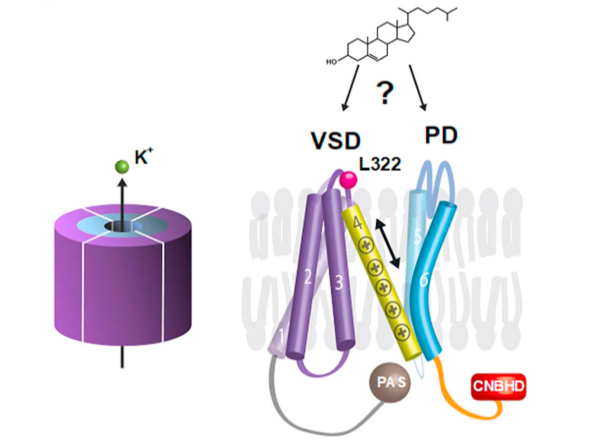Determining the target of membrane sterols on voltage-gated potassium channels
Florina Zakany, Zoltan Varga and their colleagues investigated the effects of membrane sterols on the gating of voltage-gated potassium channels. Using voltage-clamp fluorometry, patch-clamp and confocal microscopic techniques, they investigated whether cholesterol effects were mediated by the voltage-sensor domain (VSD) to the pore or the pore domain (PD) was the direct target. Specificity was tested by comparing Kv1.3 and Kv10.1 channels having different VSD-PD coupling mechanisms. Their results indicate that sterol-induced effects on Kv ion channel gating directly target the pore and do not act via the VSD. These results are published in BBA Molecular and Cell Biology of Lipids.
DOI: 10.1016/j.bbalip.2018.12.006

Figure: Voltage-gated potassium channels consist of a voltage-sensor (VSD, purple) and a pore domain (PD, blue). The 4th transmembrane helix (yellow) of the VSD is responsible for voltage-sensing. Using voltage-clamp fluorometry technique we investigated which domain mediates the effects of cholesterol, i. e. the VSD, the PD and/or the VSD-PD coupling apparatus.


